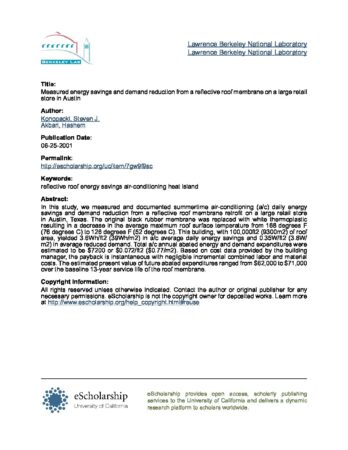
In this study, we measured and documented summertime air-conditioning (a/c) daily energy savings and demand reduction from a reflective roof membrane retrofit on a large retail store in Austin, Texas. The original black rubber membrane was replaced with white thermoplastic resulting in a decrease in the average maximum roof surface temperature from 168 degrees F (76 degrees C) to 126 degrees F (52 degrees C). This building, with 100,000ft2 (9300m2) of roof area, yielded 3.6Wh/ft2 (39Wh/m2) in a/c average daily energy savings and 0.35W/ft2 (3.8W/m2) in average reduced demand. Total a/c annual abated energy and demand expenditures were estimated to be $7200 or $0.072/ft2 ($0.77/m2). Based on cost data provided by the building manager, the payback is instantaneous with negligible incremental combined labor and material costs. The estimated present value of future abated expenditures ranged from $62,000 to $71,000 over the baseline 13-year service life of the roof membrane.
Akbari, Hashem, Heat Island Group, Energy Analysis Department, Environmental Energy Technologies Division, Lawrence Berkley National Laboratory
Source: Lawrence Berkley National Laboratory
Publication Date: June 2001
